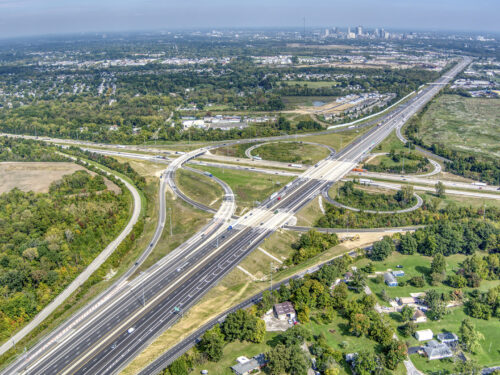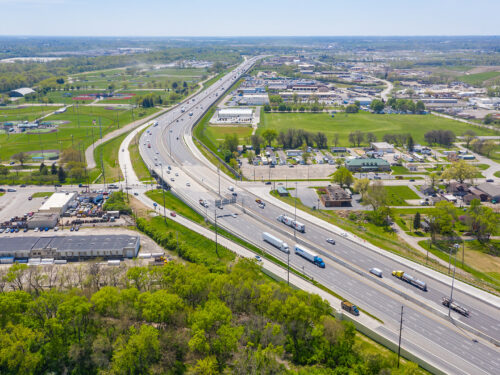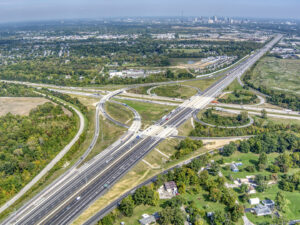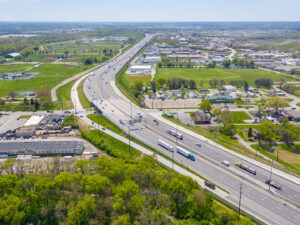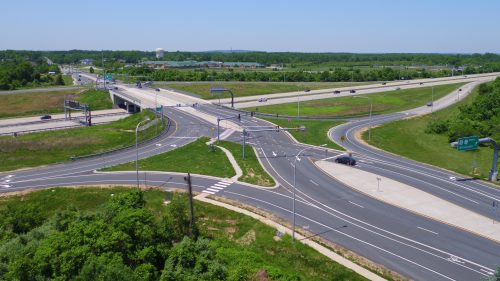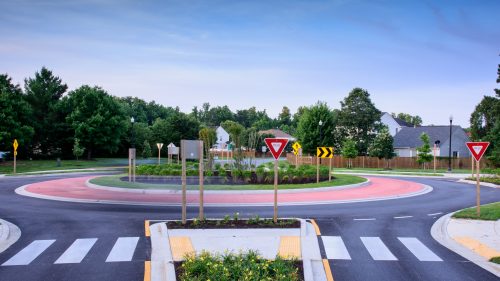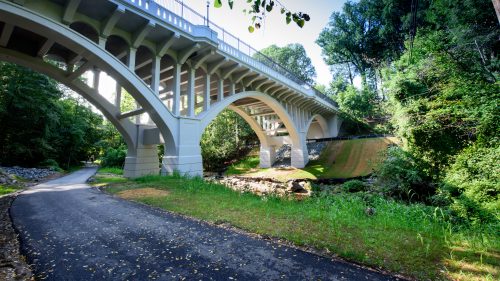I-71 Rehabilitation and Stringtown Road Interchange
I-71 Rehabilitation and Stringtown Road Interchange
This project involved the major rehabilitation of I-71 from Stringtown Road to SR 315 and included pavement replacement for 5.2 miles of I-71 and the rehabilitation of five twin, mainline structures, and three culverts. The scope involved the geometric design of I-71 northbound and southbound, entrance and exit ramps at Greenlawn Avenue, Frank Road (SR 104) and I-270 interchanges, and the southbound exit and northbound entrance ramps of Stringtown Road interchange. Through innovative design by JMT, ODOT was able to gain added capacity by a recommendation from JMT to widen I-71 throughout the corridor by adding an additional two inches of asphalt (difference between temporary and permanent pavement build-up) to gain an extra lane of traffic in each direction for the length of the project. The Frank Road/Jackson Pike/I-71 interchange was also studied for improved geometrics, capacity, movement, and safety.
Two of the five mainline twin structures were superstructure replacement of steel beam bridges with reinforced decks. The Greenlawn Avenue bridge was replaced under this project to accommodate the proposed geometry and future improvements to the 70/71/315 interchange to the north. In addition to the three bridges listed above, two other full bridge replacements were designed to accommodate the additional lane.
The bridge design considered the presence of the US Army Corps of Engineers (USACE) floodwall and avoided impacts to the gates, concrete floodwalls, and levees where possible and reconstructed sections where needed. This included revising the location for the sandbag closure on the northbound ramp from Greenlawn Avenue to reduce the required height from four feet to less than two feet, significantly decreasing the number of sandbags needed. JMT prepared the floodwall relocation design and plans, and the rehabilitation design drawings for the mainline bridge replacements. The culvert rehabilitation items included conduit cleanout, epoxy injection and patching of joints, field paving of the conduit base, headwall replacement, and replacement of rock channel protection.
Towards the end of final design for JMT’s portion of the project, the client selected TranSystems Corporation to lead the widening and reconstruction of two interchanges at I-71 and the area of Stringtown Road located in Grove City to reduce congestion and increase safety along I-71 within JMT’s project limits.
The team’s solution included collector-distributor (C-D) lanes along I-71 to separate traffic traveling to and from Stringtown Road and I-270, from through-traffic on I-71 to improve the weave operations between the two closely spaced interchanges. The addition of the C-D lanes required the complete reconstruction of the ramps at Stringtown Road and I-270. To ensure cost reductions and improve safety, ODOT Central Office completed a practical engineering study. The study resulted in the elimination of the southbound C-D road and was replaced with a complete interchange reconfiguration in the southbound direction.
JMT and TranSystems coordinated the efforts between the design and construction teams involved with adjacent projects to ensure the final design fit within the broader context of the area with a single maintenance of traffic (MOT) plan developed for the combined project. This collaboration accommodated future construction and identified cost savings. Ultimately, the team was able to save $7 million in construction costs through the finding of innovative construction solutions, while completing the design of the project on an aggressive schedule and delivering plans with more than 600 sheets from AER through tracings in four months. JMT took the lead combining the two plan sets and worked alongside TranSystems to deliver a single set of plans with more than 2,200 plan sheets for ODOT to construct the projects simultaneously, saving ODOT millions of dollars during construction.
